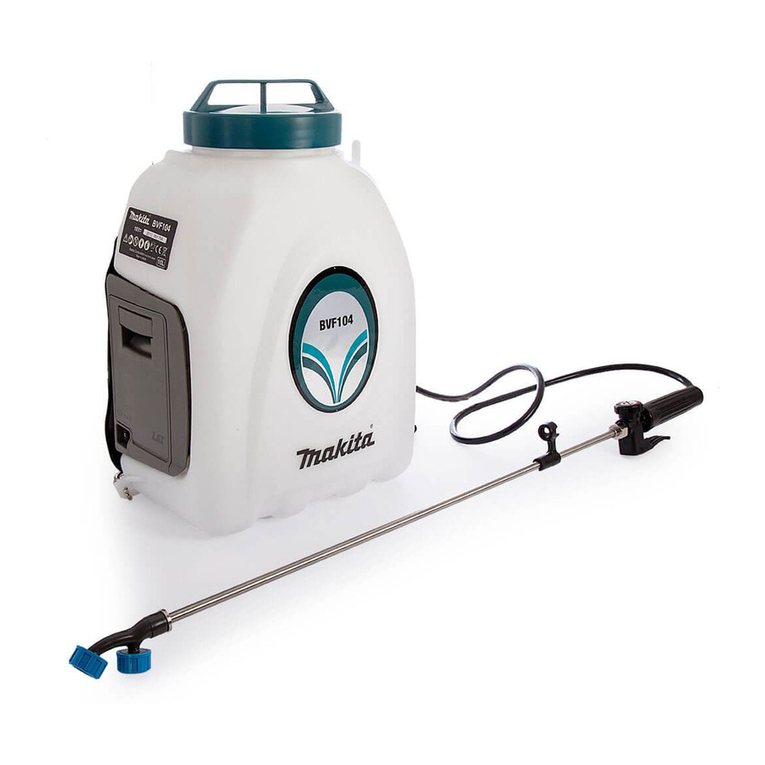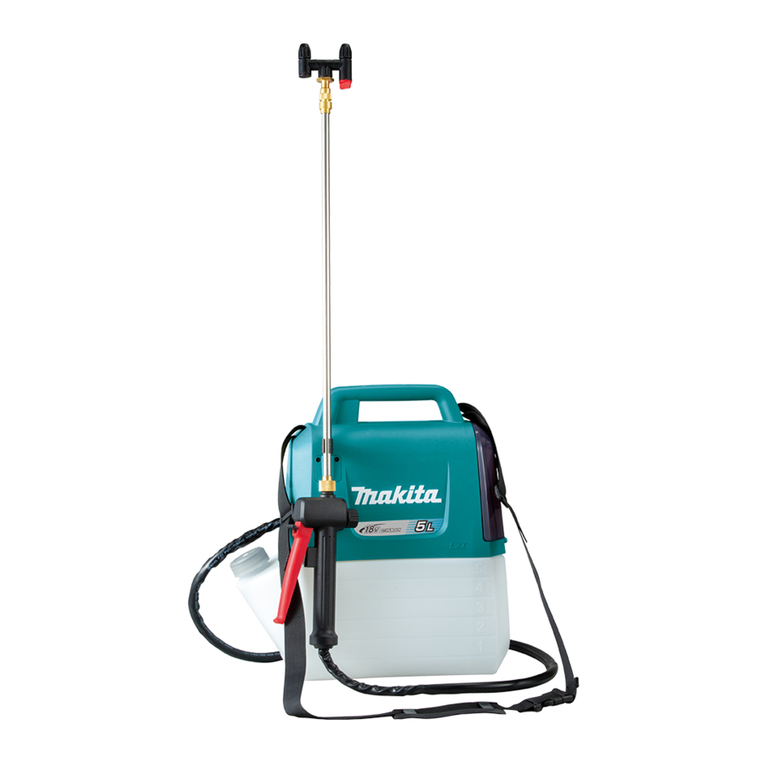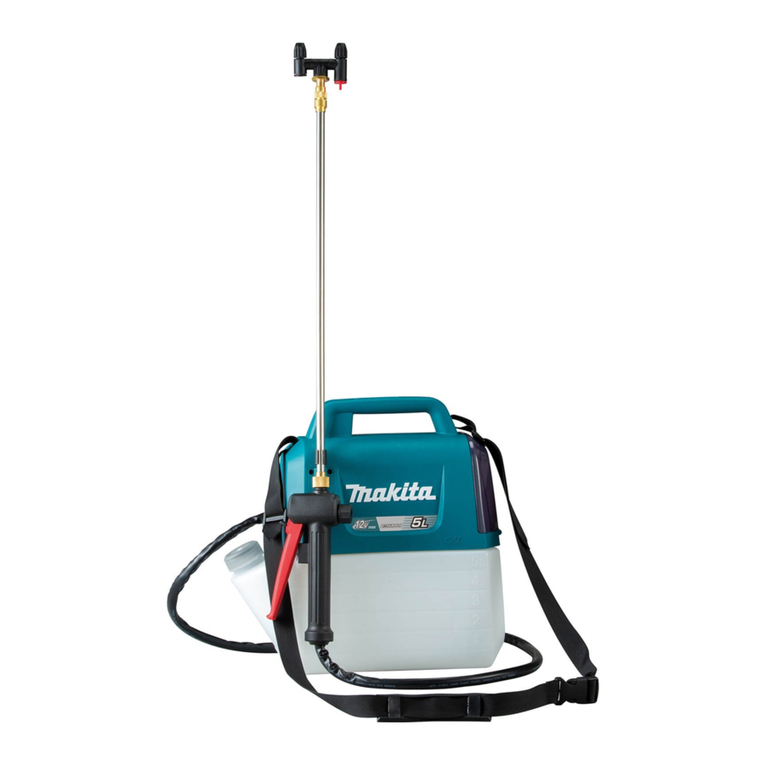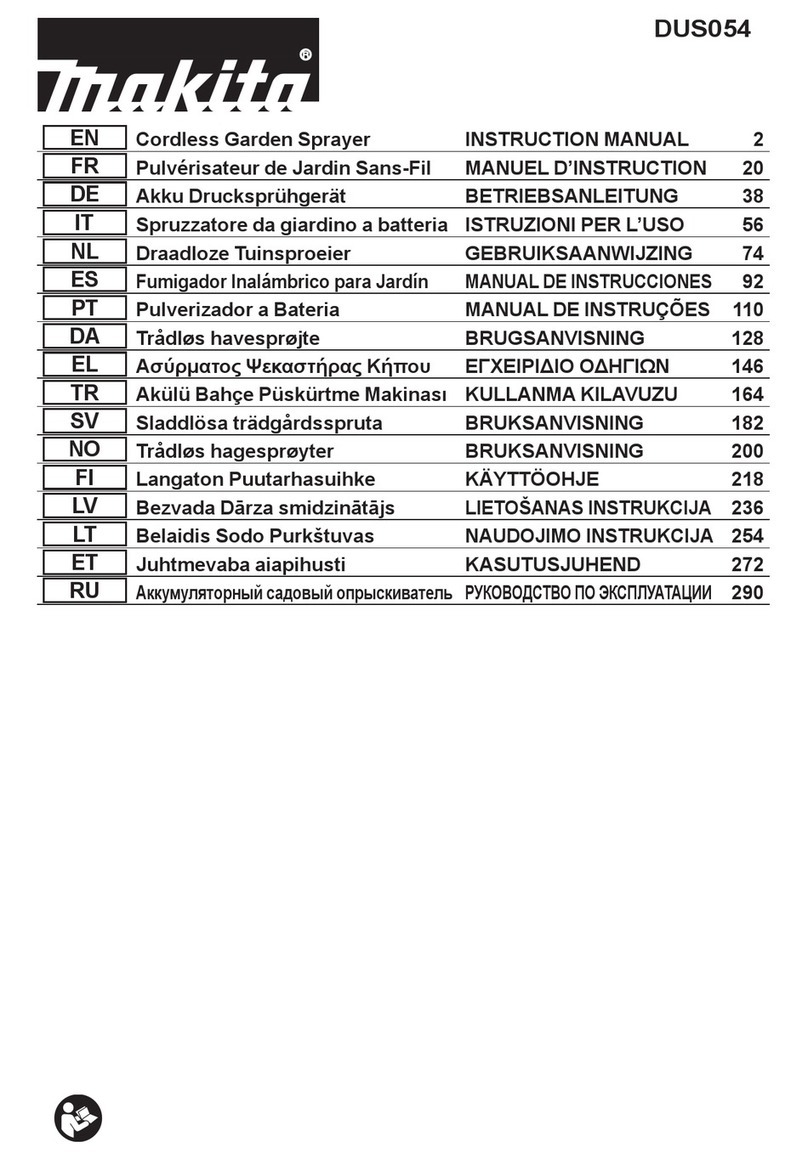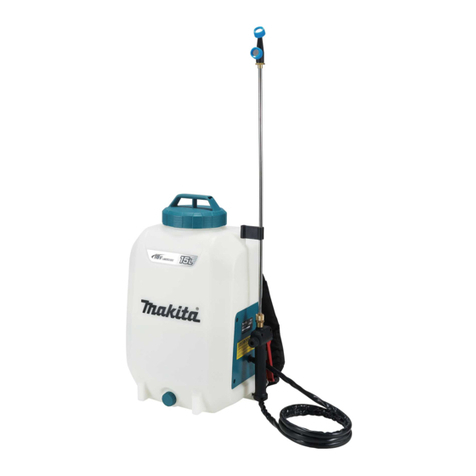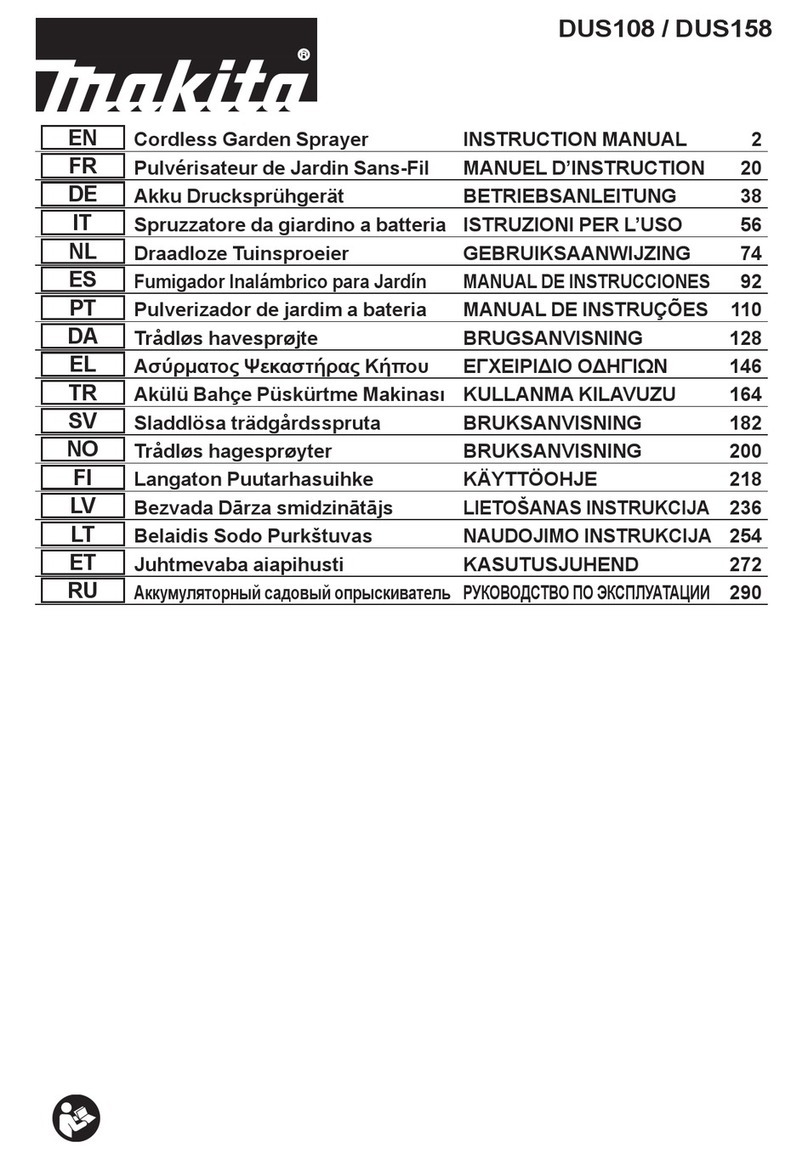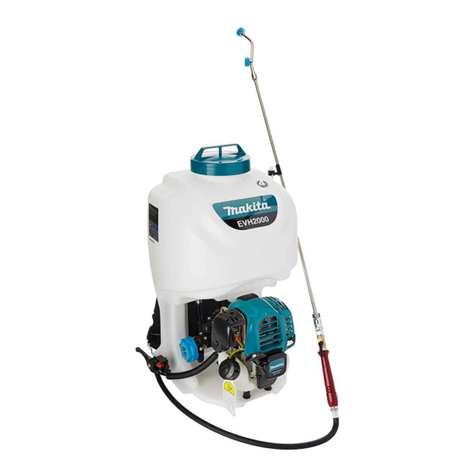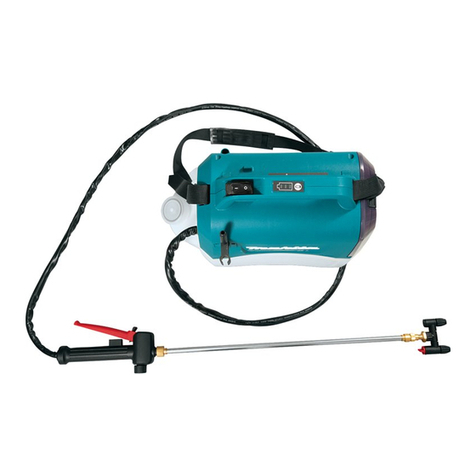
3
General Instructions
– To ensure correct operation, user has to read this instruction manual to make
himself familiar with the handling of the Power Sprayer. Users insufciently
informed will risk danger to themselves as well as others due to improper
handling.
– It is recommended only to lend the Power Sprayer to people who have
proven to be experienced with Power Sprayers.
Always hand over the instruction manual.
– First users should ask the dealer for basic instructions to familiarize oneself
with the handling of an Power Sprayer.
– Children and young persons aged under 18 years must not be allowed to
operate the Power Sprayer. Persons over the age of 16 years may however
use the device for the purpose of being trained only whilst under supervision
of a qualied trainer.
– Use Power Sprayers with the utmost care and attention.
– Operate the Power Sprayer only if you are in good physical condition.
Perform all work calmly and carefully. The user has to accept liability for
others.
– Never use the Power Sprayer after consumption of alcohol or drugs, or if
feeling tired or ill.
Intended use of the machine
– The Power Sprayer is designed for use in controlling vegetation and
eradication of insects. Do not use this sprayer for any other purpose.
Personal protective equipment
– Please wear clothing that is functional and tight-tting, without restricting
movement when operating the Power Sprayer. Do not wear clothing or
jewelry that could get tangled with foliage or the machine.
– For adequate protection against head, eye, feet, hand, and hearing injuries,
the following protective equipment and clothing must be used when working
with the Power Sprayer.
1. Always wear adequate face protection (mask, protective goggles, etc.) to
protect the face, eyes and lungs from dust and chemicals.
2. To avoid hearing damage, wear adequate hearing protection at all times.
3. To protect skin from dust and chemicals, wear work clothes with long
sleeves and long pants at all times.
4. Always wear rubber gloves when operating or servicing the Power Sprayer.
5. When using the Power Sprayer, always wear sturdy shoes with non-slip
soles. Special work shoes are available to ensure good footing and protect
against injury.
– Always secure loose clothing, hair, and accessories such as towels etc.
Loose objects may become tangled in moving parts of the machine and
cause serious injury.
Starting up the Power Sprayer
– Please make sure that there are no children or other people within a working
range of 15 meters (50 ft), also pay attention to any animals in the working
vicinity.
– Before use always check that the Power Sprayer is safe for operation:
Check to make sure the control lever operates smoothly.
– Check for clean and dry handles and test the function of the start/stop switch.
SAFETY INSTRUCTIONS
Protective
mask
Ear protection
Protective
goggles
Long sleeves
Rubber
gloves
Long pants
Work shoes
Waterproof cap
360°
15 meters
15 meters

